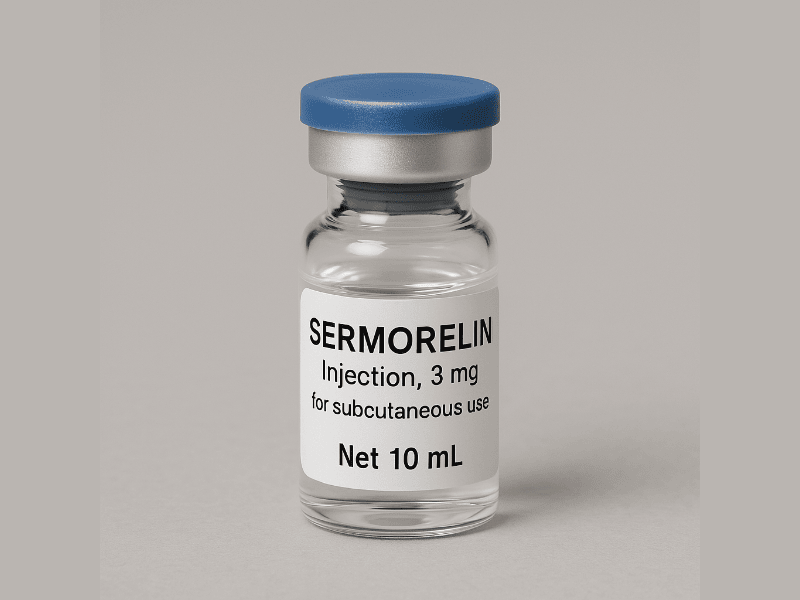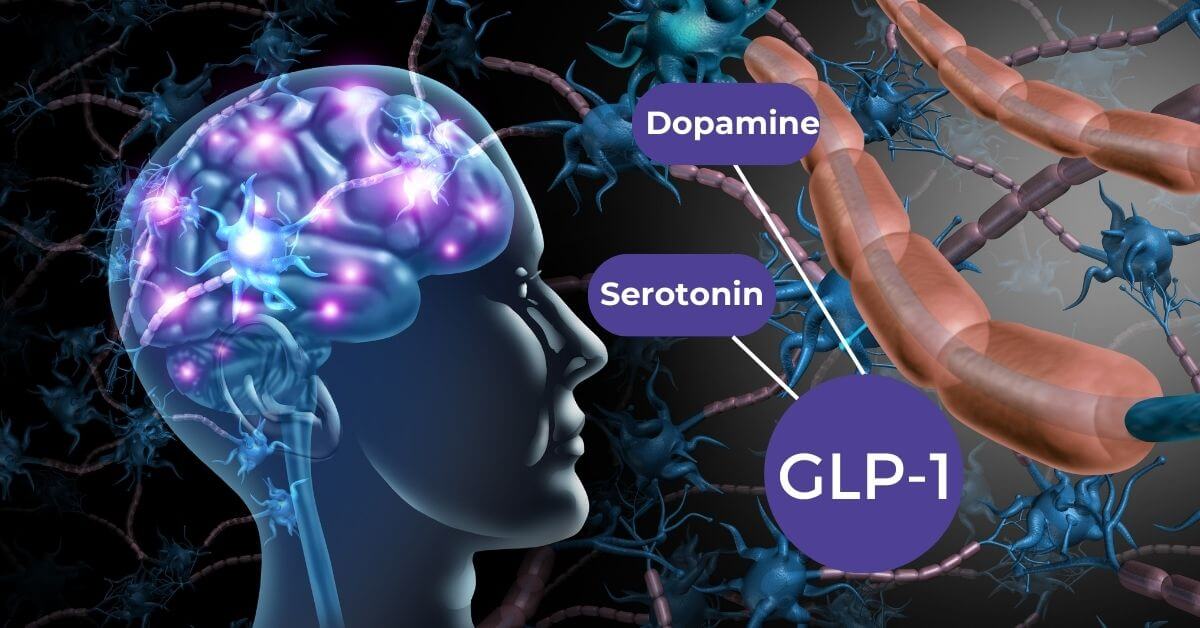Rapamycin for Anti-Aging
Data collected from multiple sources show that the average life expectancy of an individual has increased over the past 200 years. But unfortunately, along with the steady increase in life expectancy, there has also been an increase in age-related diseases. In other words, the increase in lifespan is not associated with an increase in health span. This means that even though biological advances and access to healthcare allow the majority of individuals today to live longer, there has not been a proportional increase in the number of years without age-related conditions. (1)
To overcome this problem, a number of clinical trials and studies have been conducted over the past few years to come up with a solution that increases not only the lifespan but also the health span of both younger and older individuals. An example of such a drug is Rapamycin, which has gained popularity recently for its anti-cancer and immunosuppressant effects.
What is Rapamycin?
Rapamycin, which is also known as Sirolimus, was initially recognized as an anti-fungal metabolite of Streptomyces hygroscopicus. It was found in the soil of Easter Island and then later approved by the FDA as an immunosuppressive drug for patients undergoing a transplant. Soon after, it was also found to have antiproliferative effects, based on studies conducted on mammalian cells. These anti-cancer properties of Rapamycin spurred interest among scientists worldwide to study its mechanism of action in the body and how it may play a role as an anti-aging agent.
How Does Rapamycin Work for Anti-Aging?
Rapamycin acts as an anti-aging agent due to its direct effect on the mTOR signaling mechanism. M-Tor Signalling is a unique signaling system in the body, which is activated during cancerous spread and tumor growth in the body. Studies have shown that a potential inhibition of mTOR signaling in the body can extend an individual’s lifespan (2) Since Rapamycin can inhibit the mTOR signaling, it is not considered an anti-aging drug.
Harrison et al.’s 2009 showed that administration of Rapamycin for at least 1.5 to 2 years could extend both median and maximal lifespan. (3) Other similar studies have further proved Rapamycin’s effectiveness in increasing mammals’ lifespan.
Two main pathways through which Rapamycin is able to achieve this is:
- Slowing Doing the Effects of Aging, leading to a longer life expectancy
- Preventing the damage caused by chronic diseases and neoplastic conditions in the body
Rapamycin’s Anti-Cancer Effects
The antiproliferative effects of Rapamycin in the body have made it among the most popular drugs used for the management of cancer. The anti-cancer effects of Rapamycin allow it to be called an anti-aging drug as well due to its ability to extend an individual’s lifespan. By selectively targeting and inhibiting the mTOR signaling, Rapamycin acts by impairing the cancer metabolism and its spread in the body. (4)
Rapamycin’s Neurological Benefits
The development of Neurological diseases with age is considered one of the most important causes of early mortality and a decreased lifespan. However, preventing the neurological condition and its neurocognitive benefits makes Rapamycin an effective anti-aging agent. This was further investigated in a study conducted on study participants affected by a condition known as Tuberous Sclerosis. When the participant was given Rapamycin treatment, she demonstrated suppression of Epilepsy and reduction in seizure frequency. (5)
Rapamycin’s Metabolic Benefits
Metabolic conditions like Diabetes Mellitus and obesity are among the leading causes of early mortality in the elderly population. Dysregulation of the mTOR signaling system and weight gain has been discovered as common cause of the development of these metabolic conditions. By targeting the mTOR signaling, Rapamycin acts as an effective regulator of metabolic functions of the body. It does this by maintaining a balance between the anabolic and catabolic processes. (6)
The metabolic benefits of Rapamycin’s inhibitory effects on mTOR have been investigated in a number of recent studies. One such study shows that study subjects given an acute treatment of Rapamycin may encounter a disruption in their S6K-mediated feedback loop, leading to an improvement in insulin sensitivity. Since Insulin sensitivity is the key factor for the development of Diabetes, its regulation can prevent the development of Diabetes in the first place. (7)
How Is Rapamycin Taken for Anti-Aging?
Rapamycin is found to have a cytostatic effect on cancerous cells. This means it may not kill them but prevent their proliferation by putting them in a state of stasis. This was thought o be a potential problem, as the tumor may be able to grow after the cessation of Rapamycin treatment. (8) (9)
To overcome this, it is now suggested to take Rapamycin treatment as a combination therapy. Such combination therapy is found to be more effective at working on multiple targets at a time and preventing drug resistance.
Some of the recommended methods for administration of Ramaycin include:
- An everyday dose of 1 mg of Rapamycin may be taken for several weeks. (10)
- A higher weekly dose of Rapamycin instead of a daily dose. The higher dose taken weekly can achieve higher peak blood levels of Rapamycin while preventing the onset of its side effects like fatigue.
- Take a weekly Rapamycin dose for three months, followed by a Rapamycin-free month. This is also referred to as the alternating schedule.
The Bottom Line
Even since Rapamycin was first discovered, it has been a constant subject of investigation and research. Over the years, remarkable achievements have been made in understanding the mechanisms of action of Rapamycin and how it achieves its anti-aging effects. A majority of chronic conditions that ultimately lead to a reduced lifespan are caused by the activation and dysregulation of mTORC1 signaling. The inhibitory effect of Rapamycin on this signaling pathway is the key reason for its protective effect on the body and ability to act as an anti-aging agent.
If you’re interested in Rapamycin therapy and would like to request a consultation with Text2MD, you can click here to request a consultation. Our physicians will be able to provide you with the necessary information and guide you through Rapamycin. Don’t hesitate to reach out to Text2MD to explore your options and discuss your specific needs and concerns with their healthcare professionals.
References:
- Crimmins E. M. (2015). Lifespan and Healthspan: Past, Present, and Promise. The Gerontologist, 55(6), 901–911. https://doi.org/10.1093/geront/gnv130
- Lamming, D. W., Ye, L., Sabatini, D. M., & Baur, J. A. (2013). Rapalogs and mTOR inhibitors as anti-aging therapeutics. The Journal of clinical investigation, 123(3), 980–989. https://doi.org/10.1172/JCI64099
- Harrison, D. E., Strong, R., Sharp, Z. D., Nelson, J. F., Astle, C. M., Flurkey, K., Nadon, N. L., Wilkinson, J. E., Frenkel, K., Carter, C. S., Pahor, M., Javors, M. A., Fernandez, E., & Miller, R. A. (2009). Rapamycin fed late in life extends lifespan in genetically heterogeneous mice. Nature, 460(7253), 392–395. https://doi.org/10.1038/nature08221
- Menon, S., & Manning, B. D. (2008). Common corruption of the mTOR signaling network in human tumors. Oncogene, 27 Suppl 2(0 2), S43–S51. https://doi.org/10.1038/onc.2009.352
- Muncy, J., Butler, I. J., & Koenig, M. K. (2009). Rapamycin reduces seizure frequency in tuberous sclerosis complex. Journal of child neurology, 24(4), 477. https://doi.org/10.1177/0883073808324535
- Laplante, M., & Sabatini, D. M. (2012). mTOR signaling in growth control and disease. Cell, 149(2), 274–293. https://doi.org/10.1016/j.cell.2012.03.017
- Krebs, M., Brunmair, B., Brehm, A., Artwohl, M., Szendroedi, J., Nowotny, P., Roth, E., Fürnsinn, C., Promintzer, M., Anderwald, C., Bischof, M., & Roden, M. (2007). The Mammalian target of the rapamycin pathway regulates nutrient-sensitive glucose uptake in man. Diabetes, 56(6), 1600–1607. https://doi.org/10.2337/db06-1016
- Bissler, J. J., McCormack, F. X., Young, L. R., Elwing, J. M., Chuck, G., Leonard, J. M., Schmithorst, V. J., Laor, T., Brody, A. S., Bean, J., Salisbury, S., & Franz, D. N. (2008). Sirolimus for angiomyolipoma in tuberous sclerosis complex or lymphangioleiomyomatosis. The New England journal of medicine, 358(2), 140–151. https://doi.org/10.1056/NEJMoa063564
- Marsh, D. J., Trahair, T. N., Martin, J. L., Chee, W. Y., Walker, J., Kirk, E. P., Baxter, R. C., & Marshall, G. M. (2008). Rapamycin treatment for a child with germline PTEN mutation. Nature clinical practice. Oncology, 5(6), 357–361. https://doi.org/10.1038/ncponc1112
- Kraig, E., Linehan, L. A., Liang, H., Romo, T. Q., Liu, Q., Wu, Y., Benavides, A. D., Curiel, T. J., Javors, M. A., Musi, N., Chiodo, L., Koek, W., Gelfond, J., & Kellogg, D. L., Jr (2018). A randomized control trial to establish the feasibility and safety of rapamycin treatment in an older human cohort: Immunological, physical performance, and cognitive effects. Experimental gerontology, 105, 53–69. https://doi.org/10.1016/j.exger.2017.12.026






